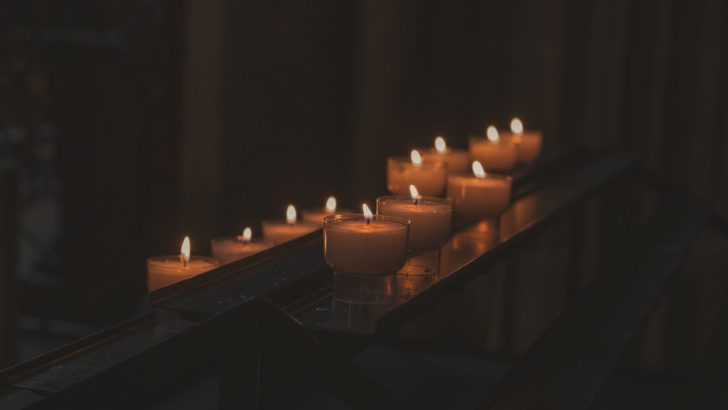Questions of Faith
If you pop into any church around the world and have a look around, you’ll probably see a set of small candles burning with the option to light one yourself.
The use of prayer or votive candles has become very popular in recent years, and they are usually lit in front of a religious statue or image of Christ. People are encouraged to light a candle for a particular intention – and so this act is a form of augmenting or enhancing prayer.
The word votive comes from the Latin votum – lighting this type of candle signifies literally that the lighting is done in fulfilment of a vow. However, most people light them as a form of devotion or to give honour to the person the statue represents rather than as the solemnisation of a promise.
Practice
The practice of lighting a candle for a need or favour isn’t particularly new as it was custom to burn lights or oil lamps at the tombs of the early martyrs in the catacombs. It showed solidarity with those who died in the name of Christ.
You don’t need to light a candle to pray for those in Purgatory – a verbal prayer is enough”
A quirky practice that dates back to around the 6th Century involved offering a candle or a number of candles at a shrine equaling in measurement the height of the person(s) for whom the prayer was being dedicated to. This became especially popular in England and Northern France in the late Middle Ages.
Of course, most Catholics associate the burning of candles with Jesus who used the image of light to convey his divine message: “I am the light of the world. No follower of mine shall ever walk in darkness; no, he shall possess the light of life.” (John 8:12)
While candles don’t have any intrinsic power or ability, they draw us towards Christ and symbolise our intense desire to pray for someone.
You can light a votive candle for any particular prayer intention; perhaps to pray ahead of an exam, for the convalescence of a loved one, and even for the dead.
From the beginning the Church has honoured the memory of the dead and offered prayers in suffrage for them”
If a person has died with venial sins, then they must go through a process of purification in Purgatory before they share in the beatific vision. Just as we can pray for the burdens of people in this life, we can also offer them to those in the intermediary stage prior to entering heaven.
“From the beginning the Church has honoured the memory of the dead and offered prayers in suffrage for them, above all the Eucharistic sacrifice, so that, thus purified, they may attain the beatific vision of God.” (CCC 1032)
You don’t need to light a candle to pray for those in Purgatory – a verbal prayer is enough. However, by burning one you join with millions of Catholics throughout the world who are offering up their intentions to God.


 Colm Fitzpatrick
Colm Fitzpatrick

